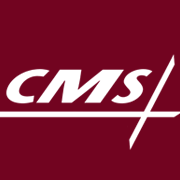CMS Final Rule Updates Inpatient Claims Reimbursement System
Medicare claims reimbursement rates for inpatient services will increase following policy changes to the two-midnight rule and uncompensated care payments.

- Providers can expect an array of changes to Medicare claims reimbursement and value-based care programs starting in October, according to a final rule issued by CMS earlier this week.

The 2,434-page final rule primarily updated the Medicare Hospital Inpatient Prospective Payment System, but CMS added revisions to several other policies, such as the two-midnight rule and uncompensated care payment structures.
“This rule finalizes policies that continue a commitment to increasingly shift Medicare payments from volume to value,” stated CMS on its website. “The Administration has set measurable goals and a timeline to move the Medicare program, and the healthcare system at large, toward paying providers based on the quality, rather than the quantity of care they give patients.”
“The final rule includes policies that advance that vision and is one of several final rules that reflect a broader Administration-wide strategy to create a healthcare system that results in better care, smarter spending, and healthier people.”
In its annual update of claims reimbursement rates for the Inpatient Prospective Payment System, CMS announced that total Medicare spending on inpatient hospital services, including capital, will rise by nearly $746 million in the 2017 fiscal year.
For some providers, the increase in Medicare spending spells higher payment rates. CMS reported that general acute care hospitals paid under the payment system will see a 0.95 percent increase in overall reimbursements if they have successfully participated in the Hospital Inpatient Quality Reporting program and demonstrated meaningful use of EHR technology.
Hospitals that do not partake in the Hospital Inpatient Quality Reporting program or do not submit the required data will face a one-fourth reduction of the market basket update, which would lead to lower payment rates. For those that are not considered meaningful EHR users, CMS will impose a three-fourths reduction.
The updated payment rates will affect patient discharges on or after October 1.
Through the final rule, CMS also revised the two-midnight rule and uncompensated care payment structures.
The federal agency eliminated the 0.2 percent decrease to inpatient payment rates, which was used to account for an increase in Medicare expenditures under the two-midnight rule. Instead, CMS will increase payment adjustments by 0.8 percent to address the effects the policy has had on providers since 2014.
Providers can also expect a change in Medicare uncompensated care payments under the new rule. CMS revised the methodology for calculating payment amounts by incorporating data from three cost reporting periods rather than just one. The updated methodology aims to limit major fluctuations in uncompensated care reimbursements from year-to-year.
However, CMS chose not finalize a proposal to include actual uncompensated care costs into the methodology using Worksheet S-10 of the Medicare cost report. Uncompensated care payments will continue to be based on Medicaid workload and inpatient days.
Although, the federal agency plans to modify the financial worksheet to improve quality controls and data measures before incorporating it into the uncompensated care payment methodology by no later than 2021.
For the 2017 fiscal year, Medicare plans to dole out $6 billion in uncompensated care payments, a $400 million decrease from last year’s amount.
Additionally, the final rule updated the Long-Term Care Hospital Prospective Payment System. Participants that successfully participated in Long-Term Care Hospital Quality Reporting Program can expect a 1.75 percent increase in payment rates starting in the 2017 fiscal year.
Despite the positive payment adjustment, CMS estimated a 7.1 percent, or $363 million, decrease in aggregate reimbursements in the next fiscal year.
The federal agency also incorporated new assessment- and claims-based quality measures into the Long-Term Care Hospital Quality Reporting Program, including discharge to community for post-acute care, Medicare spending per beneficiary, potentially preventable 30-day post-discharge readmission measure, and drug regimen review conducted with follow-up for identified issues.
Furthermore, the new rule finalized updates to several value-based care initiatives, such as the Hospital Inpatient Quality Reporting program, the Hospital Value-Based Purchasing system, and Hospital-Acquired Condition Reduction program.
CMS added four claims-based measures to the Hospital Inpatient Quality Reporting program, a pay-for-reporting initiative. The new measures will be used in 2017 to determine payments for the 2019 fiscal year and beyond.
In addition, the rule stipulated that hospitals will be required to report four quarters of data on an annual basis for eight of the 15 available electronic clinical quality measures (eCQMs). CMS will also begin to validate eCQM data reported starting in 2018, which will impact payments in the 2020 fiscal year.
The Hospital Value-Based Purchasing Program will also see an expanded measure set under the new rule. Providers will have to report on two new condition-specific measures (one for myocardial infarction and another for heart failure) starting in the 2021 fiscal year and a 30-day mortality measure following coronary artery bypass graft surgery beginning in the 2022 fiscal year.
The rule modified the Hospital-Acquired Condition Reduction Program by developing data submission requirements for newly opened hospitals and updating the program scoring methodology from decile-based to continuous scoring.
To view the complete rule, click here.
Dig Deeper:
• What is Value-Based Care, What It Means for Providers?
• What Clinical Quality Measures Mean to Healthcare Providers?
